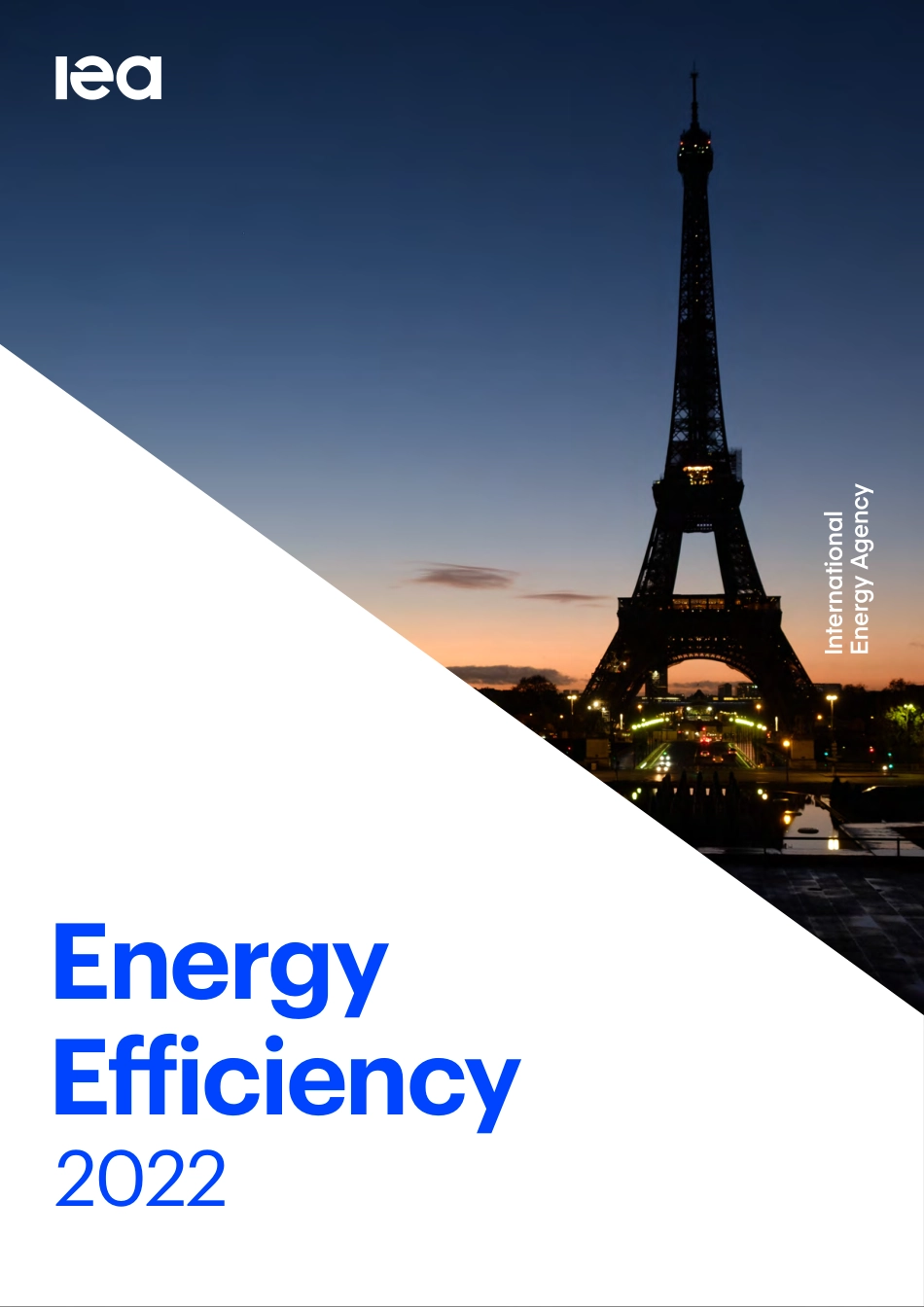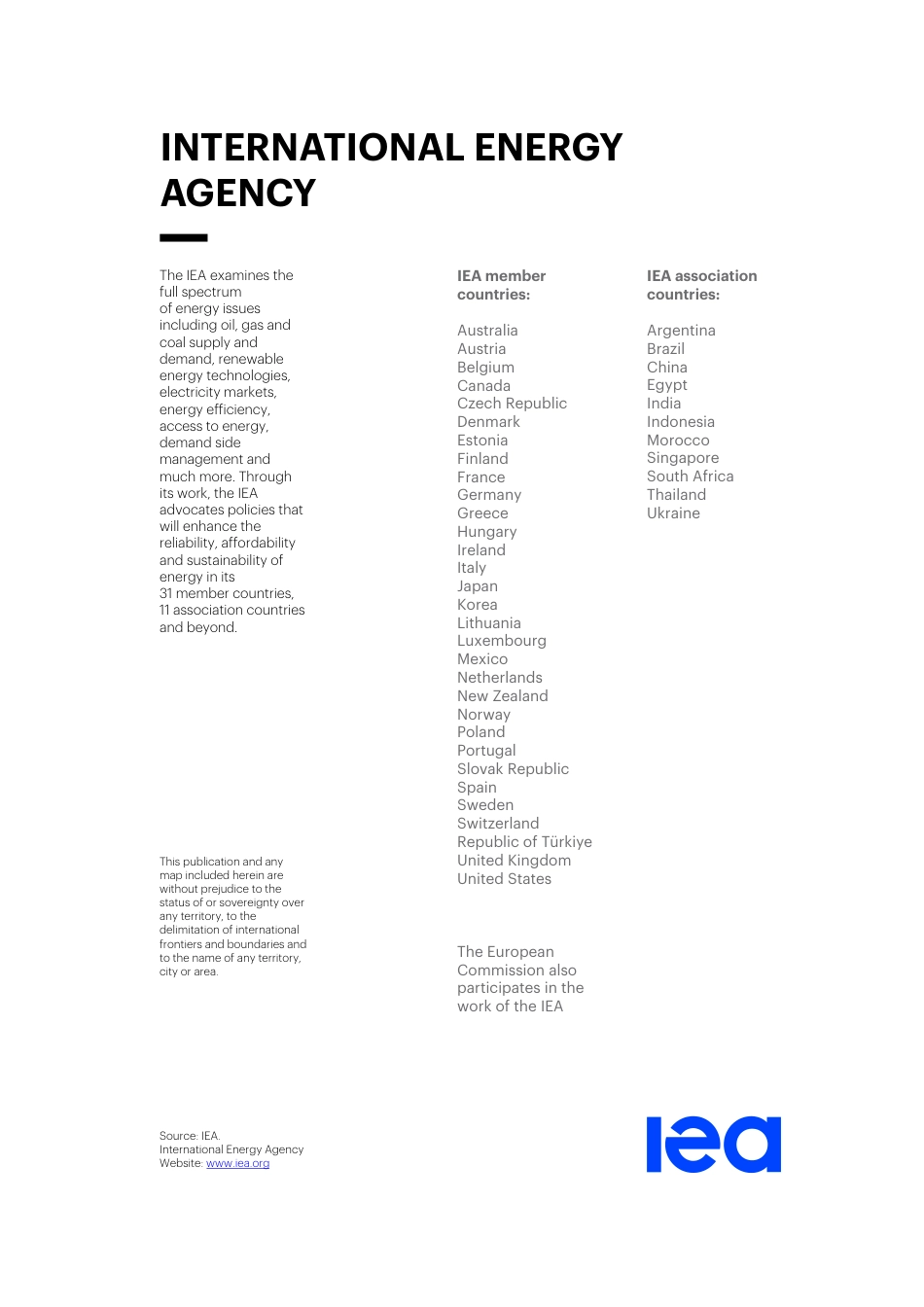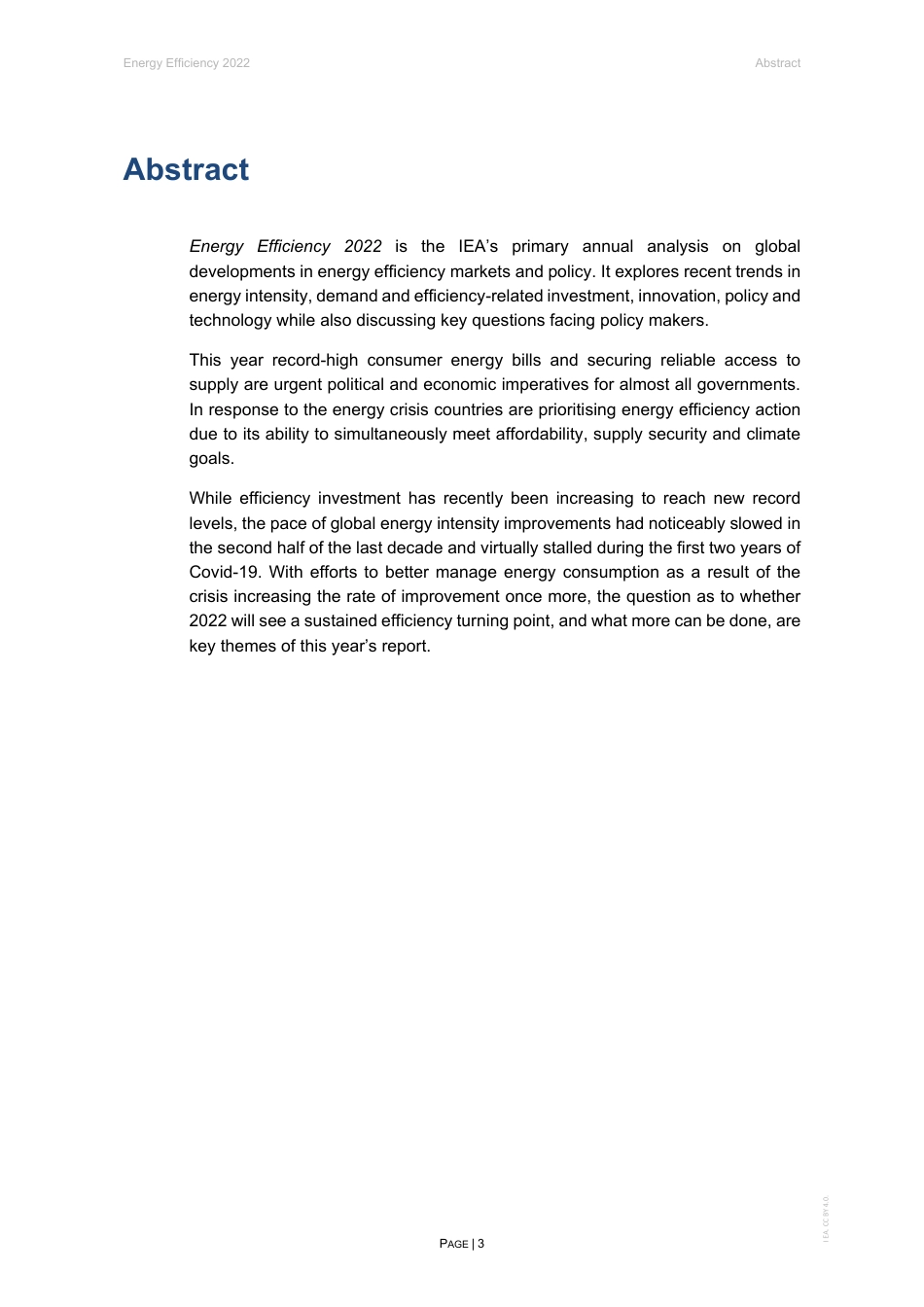Energy Efficiency2022The IEA examines the full spectrum of energy issues including oil, gas and coal supply and demand, renewable energy technologies, electricity markets, energy efficiency, access to energy, demand side management and much more. Through its work, the IEA advocates policies that will enhance the reliability, affordability and sustainability of energy in its 31 member countries, 11 association countries and beyond.This publication and any map included herein are without prejudice to the status of or sovereignty over any territory, to the delimitation of international frontiers and boundaries and to the name of any territory, city or area.Source: IEA. International Energy Agency Website: www.iea.orgIEA member countries: AustraliaAustriaBelgiumCanadaCzech RepublicDenmarkEstoniaFinlandFranceGermanyGreeceHungaryIrelandItalyJapanKoreaLithuaniaLuxembourgMexicoNetherlandsNew ZealandNorwayPolandPortugalSlovak RepublicSpainSwedenSwitzerlandRepublic of TürkiyeUnited KingdomUnited StatesThe European Commission also participates in the work of the IEAIEA association countries:ArgentinaBrazilChinaEgyptIndiaIndonesiaMoroccoSingaporeSouth AfricaThailandUkraineINTERNATIONAL ENERGYAGENCYEnergy Efficiency 2022 Abstract PAGE | 3 I EA. CC BY 4.0. Abstract Energy Efficiency 2022 is the IEA’s primary annual analysis on global developments in energy efficiency markets and policy. It explores recent trends in energy intensity, demand and efficiency-related investment, innovation, policy and technology while also discussing key questions facing policy makers. This year record-high consumer energy bills and securing reliable access to supply are urgent political and economic imperatives for almost all governments. In response to the energy crisis countries are prio...



